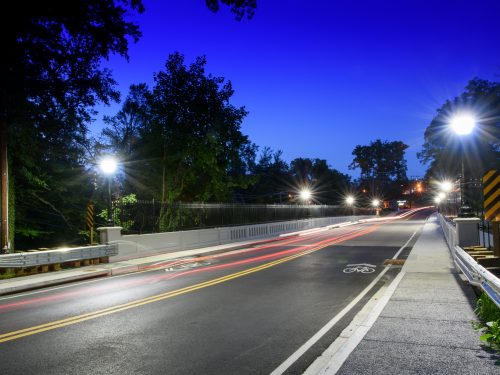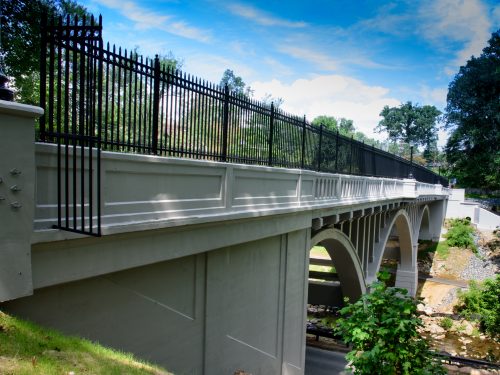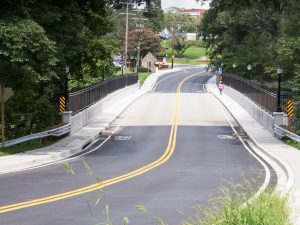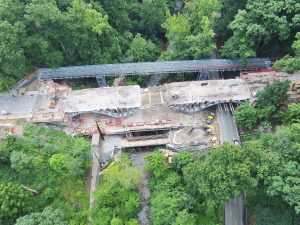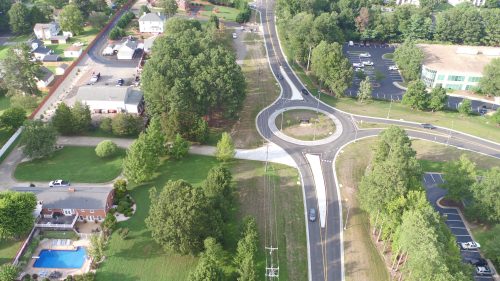MD 195 Over Sligo Creek
MD 195 Over Sligo Creek
The MD 195 bridge, constructed in 1932, is a three-span, 224-foot-long structure spanning Sligo Creek Parkway, Sligo Creek, and the Sligo Creek Trail in Montgomery County. The Maryland State Highway Administration (MSHA) determined that the open spandrel-reinforced concrete bridge required reconstruction, but reconstructed in place, 50 feet above a ravine, as the structure is historically eligible and a priority for preservation. It was crucial for the bridge to maintain its character, and therefore was reconstructed from the arch rings up.
JMT performed an in-depth field inspection assessment and prepared contract documents for the rehabilitation. Work included the structural design and plans for replacing the entire portion of bridge above the main arch rings, as well as repairs to portions of the existing structure that would remain.
Extensive outreach and partnering with the community included two public meetings to receive comments, as well as meetings with the City of Takoma Park city council, Washington Adventist Hospital, Maryland-National Capital Park & Planning Commission, Montgomery County Planning, Montgomery County Ride-On Transit, and emergency vehicle services.
A major community concern was the need to maintain traffic during construction, particularly because of the bridge’s adjacent location to the hospital and along bus routes. The non-redundant configuration of the two-arch bridge, however, precluded the use of staged construction for maintenance of traffic. Additionally, there was insufficient right-of-way for a temporary vehicular bridge. Although the bridge was closed to vehicular traffic, the contractor erected a temporary pedestrian bridge in response to the community’s needs.
The primary construction challenge was access. Steep side slopes at each end of the bridge precluded providing construction entrances from MD 195. The best solution was an entrance off Sligo Creek Parkway, but it complicated matters since this road also served as the temporary detour. With access established, the contractor installed a temporary work bridge, which avoided interfering with Sligo Creek and provided access for construction equipment on both sides.
The reconstructed bridge was widened to allow more room for bicyclists while installing sidewalks on both sides. The project met MSHA’s timeframe for completion and remained at the construction budget.
This project received multiple honors, including a Bridge Design Award of Excellence from the Portland Cement Association (PCA) and Outstanding Project Award from the American Council of Engineering Companies/Maryland.
